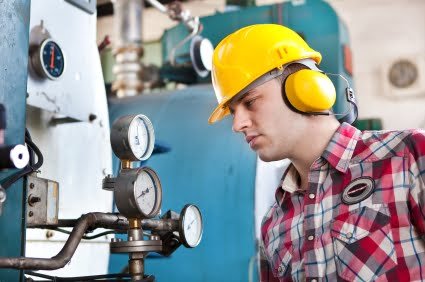What is climate control in personal protective equipment, and why is it important?
“Wearing PPE increases your risk for heat-related illnesses,” NIOSH’s “Prevent Heat-Related Illness” poster (publication No. 2016-151) states. Although this is true in a general sense, it’s somewhat of a paradox because incorporating climate control into your employees’ PPE could be the most effective way of preventing heat-related illness. (Note: Any recommendations in this article are not to contradict the poster but, rather, should be considered as further ideas).

Climate control in PPE includes items that allow your employees to maintain their body temperature and work comfortably. Here are some examples:
- Climate control device. This is a flow-control device used with supplied-air respirators to cool or heat incoming air. It’s effective and includes temperature control, which the wearer can adjust as required.
- Air conditioning devices. These provide heating or cooling, and sometimes both. They also are flow-control devices, but increase or decrease the temperature by a fixed amount instead of providing temperature control.
- Cool vest. These typically are filled with a coolant that remains at around 59° F to help keep workers’ torsos cool. The coolant is effective, but adds extra weight to PPE.
- For blasting and heavy industry, the blast jacket is available. This attaches to your respirator and directs air down workers’ torsos and arms to cool the upper body. Even if the air is not temperature-controlled, air flowing over their bodies provides cooling.
- Coveralls, used in conjunction with an air-supplied respirator (supplied air or powered air) that connects to the coveralls or has a tuck-in collar, provide cooling similar to a blast jacket, as they direct air down over the body.
When the combined temperature of your body and your environment reaches levels at which your body can’t regulate heat gain though sweating, you can develop heat cramps. If promptly treated by drinking water and resting in a cool place, further illness can be prevented. If ignored, this can develop into heat exhaustion and include symptoms such as heat cramps, confusion, nausea, headache, dizziness and fainting.
The worst form of heat stress is heat stroke (a type of hyperthermia), in which your body may stop sweating, collapse and go into seizure. This is life-threatening and requires immediate medical attention. The purpose of climate control in PPE is to assist your body in maintaining a safe and comfortable temperature to prevent the mildest forms of heat stress.
Also important is protection from the cold. Prolonged exposure to cold temperatures can develop into hypothermia, which also is life-threatening.
Whether it be an increase or decrease in temperature required, it’s important that your employees are comfortable. Uncomfortable employees are a lot more likely to lose focus and not pay enough attention to their job and surroundings, make unsafe decisions, or subconsciously violate safety measures and risk harming themselves. Some of the aforementioned symptoms of heat stress, such as fatigue, confusion and dizziness, are examples of how employees are at risk by not being comfortable.
It is in the best interest of employers to ensure their employees are comfortable so they can operate at maximum productivity. Climate control in PPE assists the body in maintaining a safe and comfortable temperature to prevent heat- and cold-related illnesses, which can be life-changing or life-threatening. It also is imperative for maximized safety and productivity. Research your options and do product trials, when possible, to find your ultimate climate-control solution.



